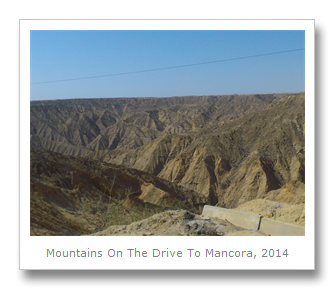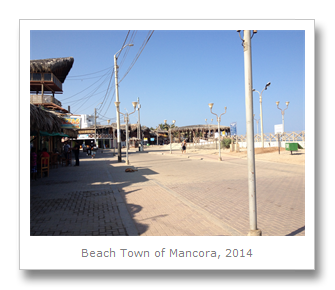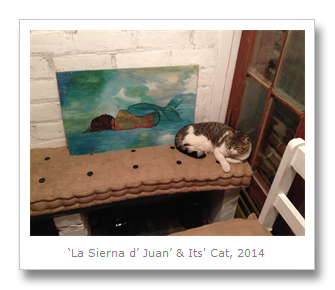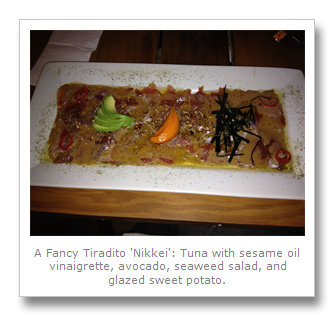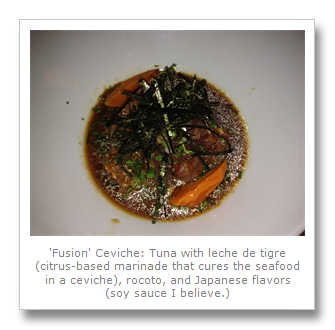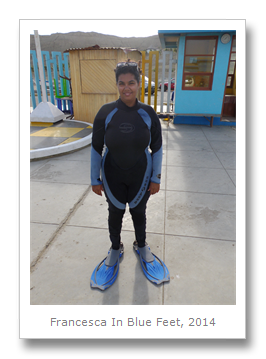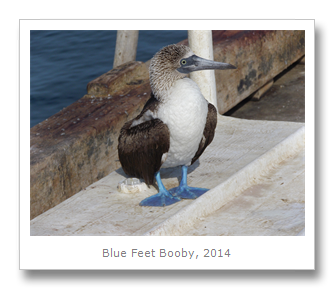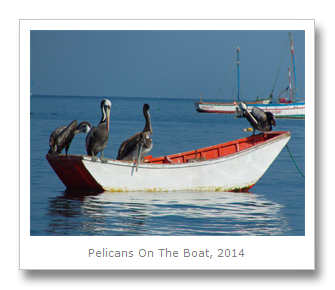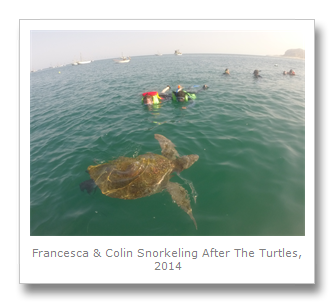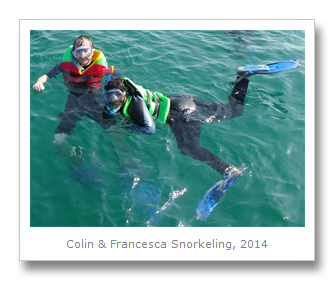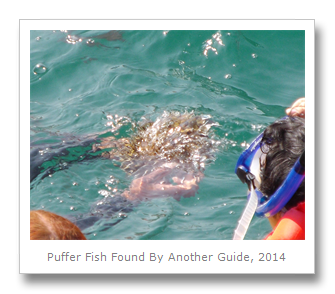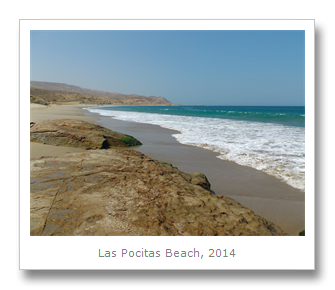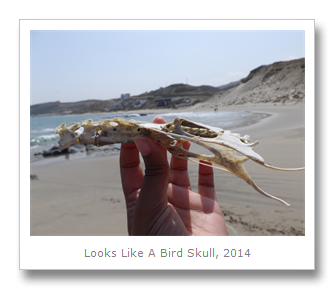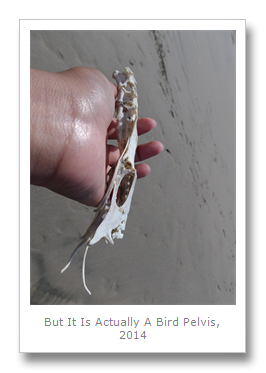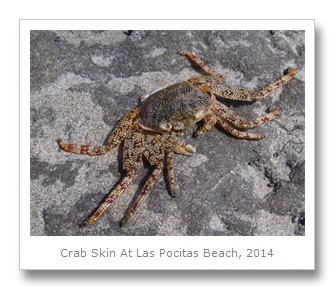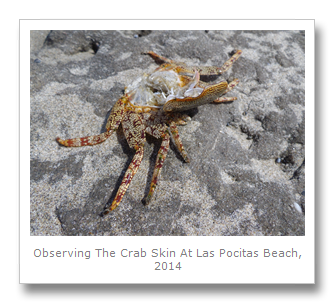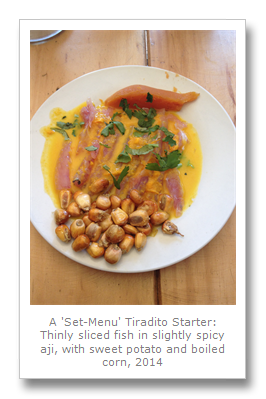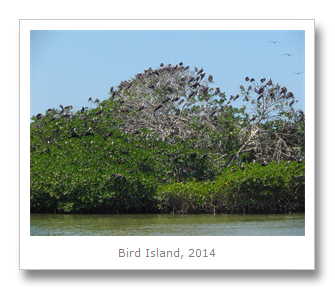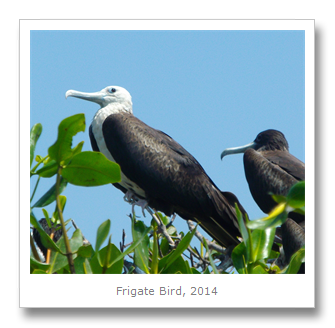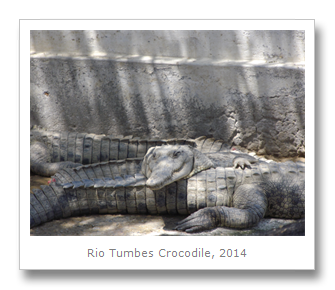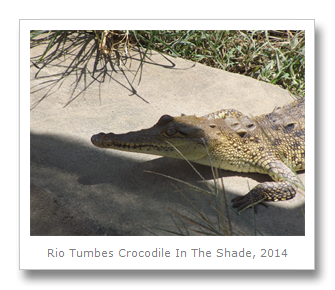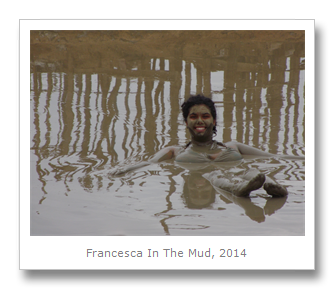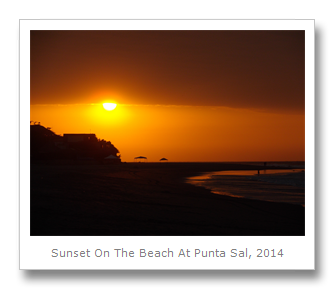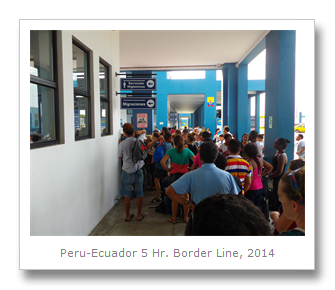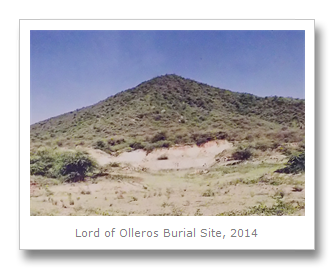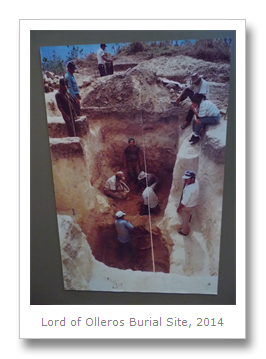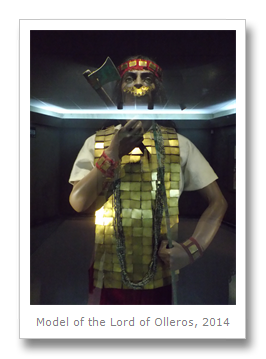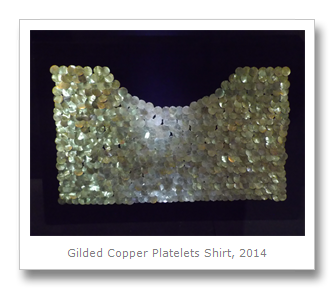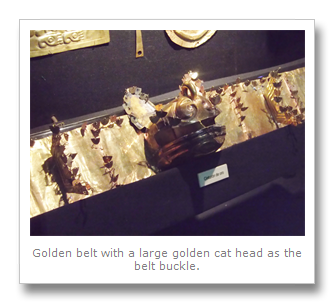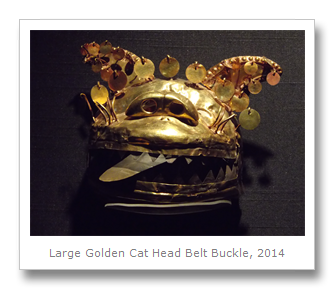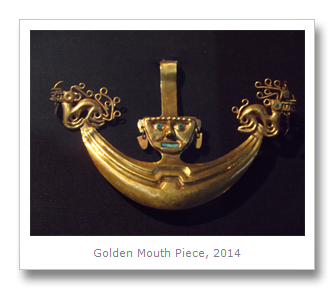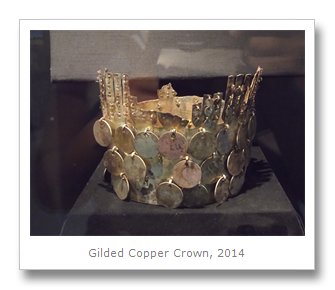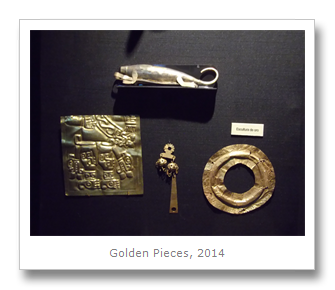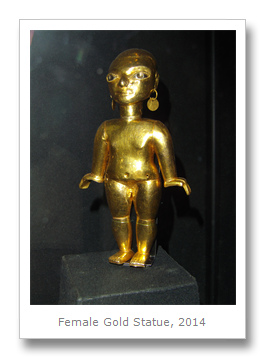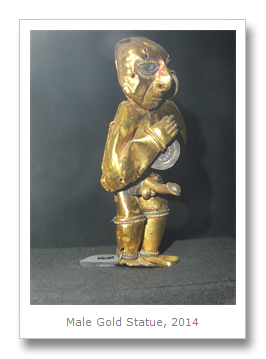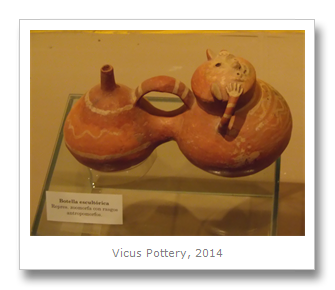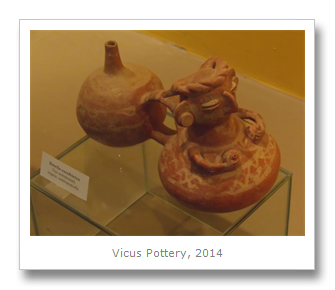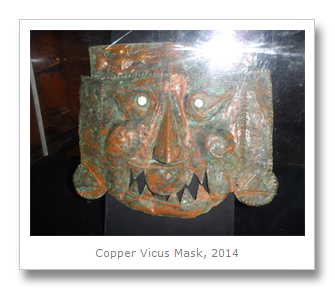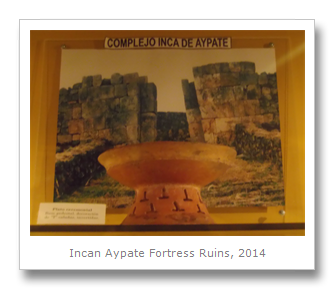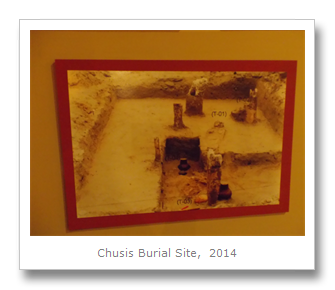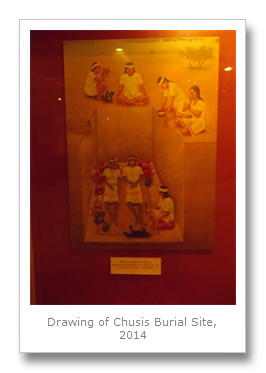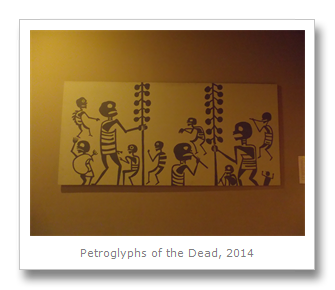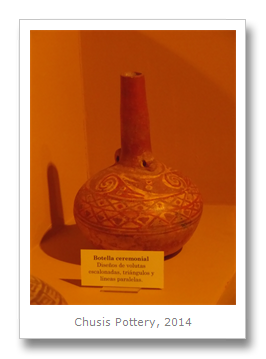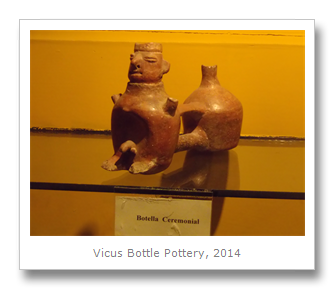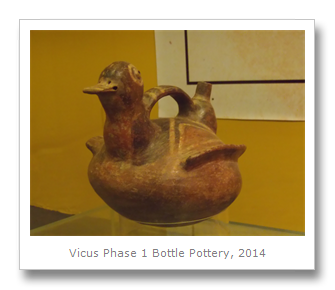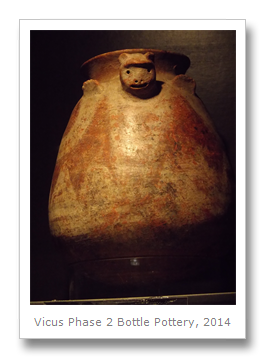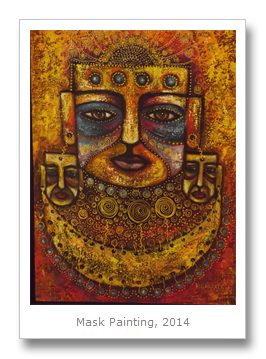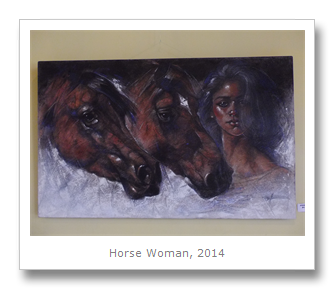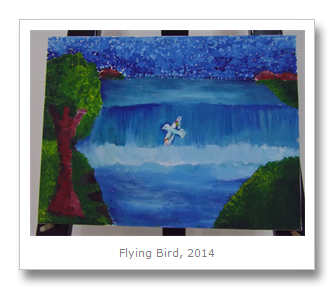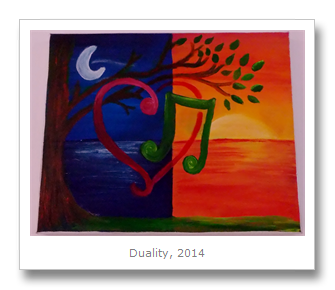We arrived in the popular beach tourist town of Mancora on November 27th, and decided to try and find a nice place to stay with a pool. Luckily our moto driver took us to one, and we checked in to a place just off the main walking street, in front of one of the beaches. Mancora gets hundreds of thousands of tourists a year, and we could tell straight away that staying here was going to be lively. There were bars, nightclubs, Western food – and interesting Peruvian fusion food!
One of the reasons I wanted to stop in Mancora was to try a Peruvian-Japanese fusion cuisine called ‘Nikkei.’ Colin and I decided to celebrate Thanksgiving unconventionally by going for Nikkei food at ‘La Sierna d’ Juan’ on the main driving street in Mancora. That evening we ordered loads of different dishes, starting with tiraditos, a Peruvian dish of raw fish, in a spicy Peruvian aji sauce. While Peruvian ceviche is quite similar to tiradito, ceviche is typically cubed and served in a marinade, while tiradito is thinly sliced and served raw. I have posted photos of some of the fusion dishes we tried. Delicious!
The following morning, November 28th, Colin and I attended a daytrip with the company Iguana’s Trips to swim with green sea turtles, so-named for the green fat under their shells. Our guide picked us up near our hotel and loaded us into the van. After picking up a couple other tourists along the way we changed into some wetsuits at the welcome center and headed out to the boat. We didn’t need to go far however, as the green sea turtles came right up almost to the shore. There was barely enough time to notice and take a quick photo of our first blue footed booby sighting! (I took this sighting to be our invitation to come to the Galapagos! We had been debating for quite a while if we should rush into Ecuador to make it… and seeing the booby was so exciting – it made the decision so much easier to go!)
Our group got into the water and started swimming around, with our guide taking some underwater video and some ‘out of water’ photos for us of our experience with the sea turtles. These amazing animals were so beautiful to swim with, and much faster in the water than their large oval bodies first indicate. Apparently, one can distinguish green sea turtles from other sea turtles based on their single pair (rather than double pair as in other turtles) of scales located in front of their eyes. These turtles have small heads and serrated jaws for tearing bits of food. While most of the turtles we swam with were 3 or 4 feet in length, they grow up to 5 feet in length and can weigh nearly 400 kgs.
After our turtle swim, the group dried off and had some snacks (juice and cookies never gets old!) before heading to a beach called Las Pocitas. The waves crashed quite strong here, and we watched a sea lion play around in them, while loads of frigate birds and pelicans flew around over ahead. I headed into the warm rock pools filled with little critters while Colin tried to stay somewhat shaded. Once the waves started crashing up onto the rocks we noticed lots of colorful crabs running around, anxious to reach higher ground. One of the crabs was just a shell of its former self, having shed its skin and ran away sometime before! The crashing started to get quite intense at this point, and our group decided to leave, driving back towards Mancora. Time for a dip in the lukewarm beaches’ ocean – and shortly after, the cold hotel’s pool! ![]()
Colin and I spent the day relaxing on November 29th, as he had picked up a bit of a sunburn. I got to head out for some more time at the beach, reading a book and munching on snacks while watching the lifeguard school do their training pretending to ‘rescue’ each other from the water. It was pretty funny to watch, especially the ‘mistakes’ they made. After this Colin and I got a set-menu lunch together, then he headed back to the room to stay out of the sun while I went for a ride with two other girls on a banana boat. It didn’t last long because the weather was getting pretty bad, but it was bumpy and fun – I only fell off once!
On November 30th we took a daytrip to some areas around the city of Tumbes, the Northern-most city in Peru – though Peru’s right to Tumbes was debated by Ecuador up until the 1990’s. Tumbes was formerly part of the Incan Empire, and before the Incans was inhabited by hundreds of thousands of native ‘Tumpis’ peoples. We headed to see some interesting mangroves at Puerto Pizarro, named after the Spanish conquistador who conquered the area from local chieftain Chilimaza in the 1500’s.
The mangrove area itself was called the Santuario Nacional los Manglares de Tumbes. Once we arrived at them we headed on board a couple of boats to tour around the area. There are 5 different species of mangroves in the sanctuary, but it is the red mangroves which contain black conch. Also in the area are shrimp and lots of birds including pelicans and some of those we saw at ‘Bird Island,’ such as frigate birds. We didn’t see any mammals, but there are apparently crab-eating raccoons and otters in the area as well.
Our group stopped off to visit the crocodile farm, which protects (aka ‘stores,’ because of their decline in the mangroves) the Rio Tumbes crocodiles. This crocodile is on the UN red-data species list, meaning it is under threat due to the local fishermen using the sanctuary for shrimp farming, as well as from pollution due to up-river gold mining and the local people’s agricultural and waste disposal practices (everything is dumped into the river with no treatment or consideration.)
On our way back to Mancora we stopped for an hour to swim in some mud pools called hervideros, which contain dissolved minerals. These mud pools were somewhat warm (but not very) but thick and soft. In the dark brown mud I saw lots of small colorful bubbles – probably different minerals coming up from the ground, but I have no idea which ones. It just looked like little mini rainbows and was pretty memorizing. When Colin and I switched from one mud pool to another I fell down the slippery steps and caught my leg pretty hard on one of the wooden planks used as steps – leaving a bruise and some scarring. After the mud pools we were told to pay some money for water to clean ourselves off with. Unfortunately, there were no showers working. We ended up being asked to pay for buckets of water from which we had to use small cups to clean ourselves off with! And there were no towels provided. The mud was OK, but what a scam those guys were running.
On the way back to Mancora we stopped off at a small beach called Punta Sal where we saw a stunning sunset. It was too cold to swim much, though I did anyways, before drying off and relaxing on the sand with Colin. Soon we headed back to the bus and returned to Mancora for some dinner out at a vegan restaurant and much needed sleep.
On December 1st we decided it was time to head out of Peru and into Ecuador. Our wait in the immigration line was horribly long because there were school groups ahead of us and people bribing the security guards to cut into the line ahead of everyone else. Our only relief was a small shop across the street which provided ham and cheese grilled sandwiches, which later on that evening succeeded in making us both pretty sick.
Now that we were in Ecuador, we needed to buy our flights and book our cruise in the Galapagos. On now to the volcanic islands!
Francesca
